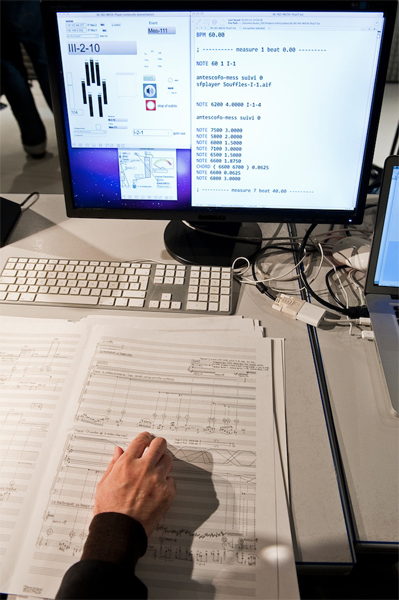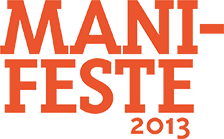The obsolescence of the technologies used by musicians in real-time works can be seen as a danger, as a risk for the existence of these new forms of musical expression. Masterpieces in peril, end of story, end of history…. Should we be so pessimistic?

We compare scores written on paper with a durability that can be measured in centuries – we can still find music written down in the Middle Ages – with digital supports whose instability can be measured daily, at our expense. But we forget, in doing this, that an unearthed parchment only has value to the person who knows how to read it, that written music remains virtual if it is not sung.
Throughout its history, IRCAM has been an arena where we can observe the problem of the conservation of digital supports for interactive music. In the beginning, we were not aware of the seriousness of the problem: the works produced in the 1980s were made with a total lack of concern for this issue or with the optimism of a technophiliac. The realization of the issue came about later, in the beginning of the 21st century.
IRCAM has always been concerned by the conservation of the works created in its studios. To create its repertoire, the institute has committed to working with composers from whom it commissions works that use the fruits of the institute’s research. This concern for the conservation takes the form of archives on different supports and documentation written by tutors/assistants/computer music designers. Increasing the prestige of works by performing them in concert and on tour leads to the creation of an original repertoire. The conservation of this repertoire is obviously a part of the will to create a history, a certain type of tradition.
The experience of the computer music designers, who must transfer sometimes complex works to perform them again (at IRCAM we call this action “porting”) from one system to another as technology evolves from one generation to another (from the historical 4X to the IRCAM computer music station and different versions of MAX software), has led us to invent, to develop, a specific savoir-faire of the techniques and practices that have made it possible to save almost the entire catalogue of works created at IRCAM (about 600 works) from digital ruin.
The score is an integral part of our musique savante (serious art music). Even if all music is ephemeral and immaterial, the act of writing it down inscribes it in history and in the effort of “the desire to last”. Not all composers seem particularly worried about the future of their works; creation is more about renewal, about a flow, than about hoarding and storing. And yet, if composers write down their music, it is for its survival. The score is both a means to transmit music to the performers and a support that enables its long-term preservation. In this respect, electro-acoustic music, and particularly interactive mixed works, creates numerous problems because today there is no universally shared musical notation.
The conservation of electro-acoustic works is impossible without its performers who are computer music designers, both archeologists of a near past, specialists of obsolete technologies, interpreters of musical texts, and virtuosos of new musical instrument-making technologies. The responsibility of transmitting the composer’s will with authenticity lies with them.

